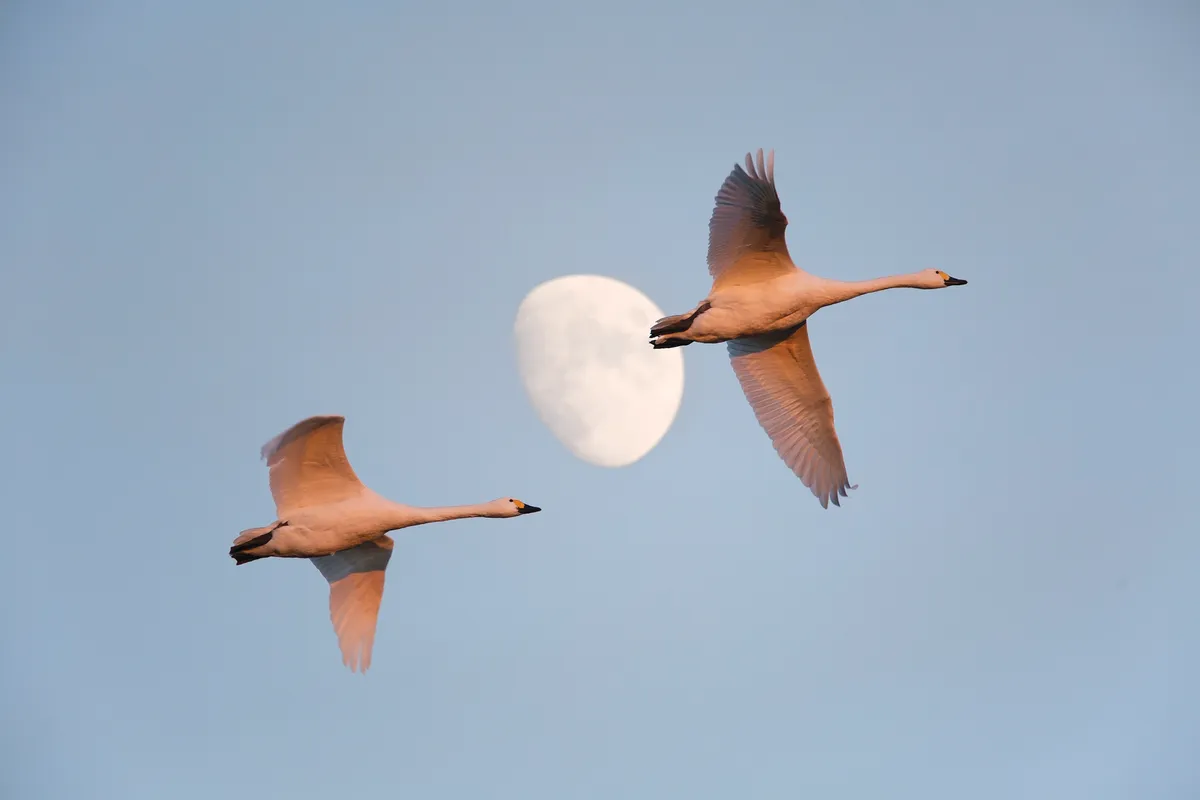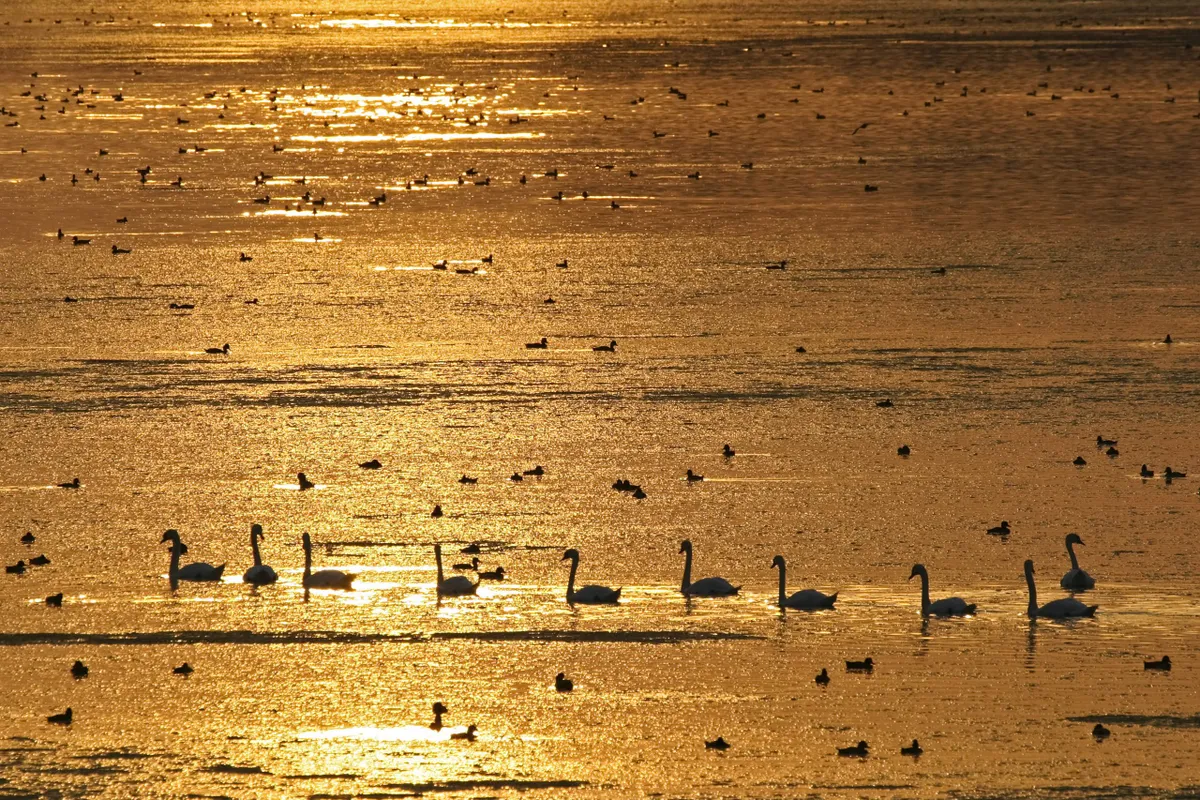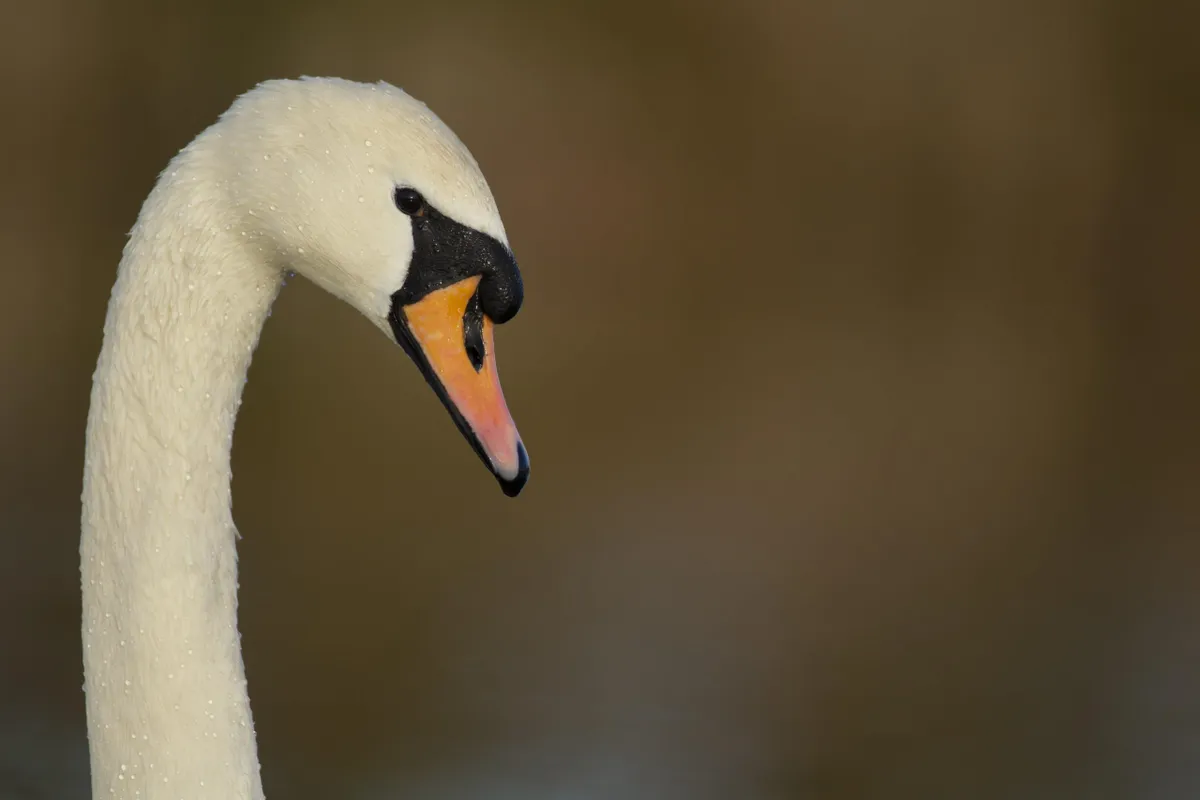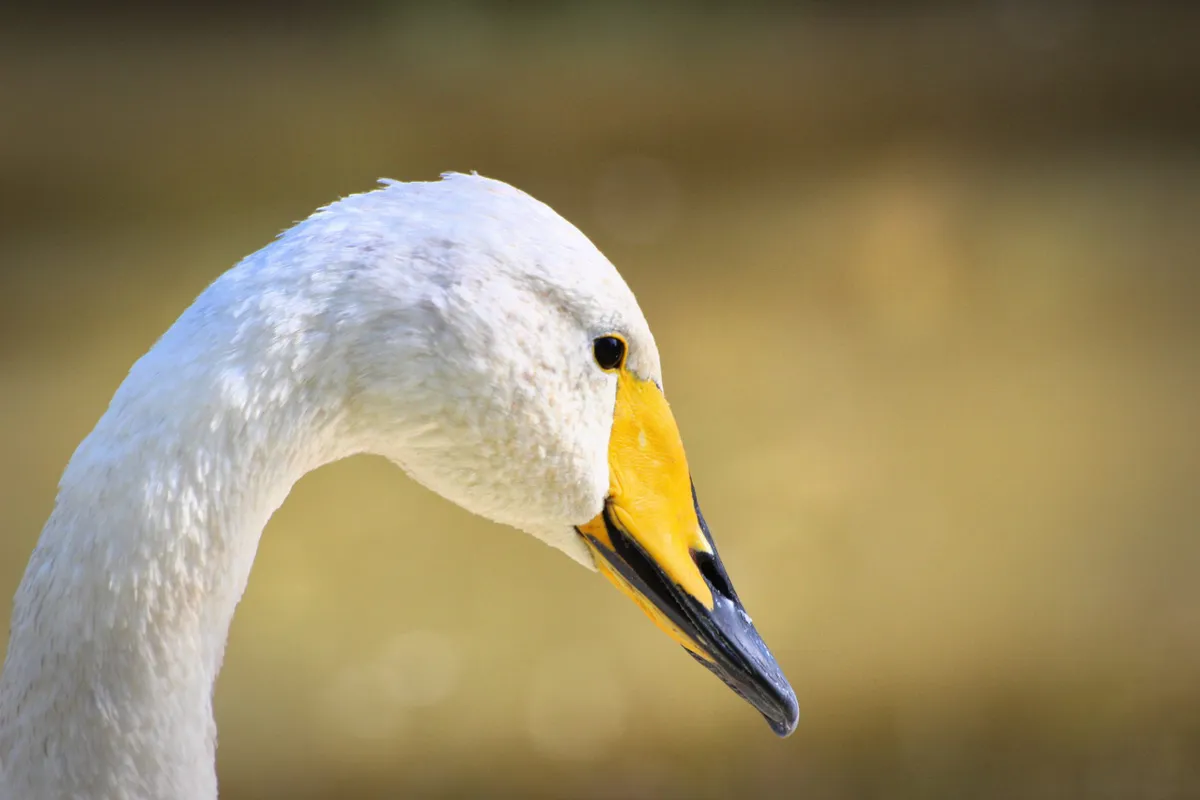It’s no surprise that this glamorous creature can claim a range of superlatives. The mute swan, for instance, is easily the heaviest British bird – the largest individuals clock in at a remarkable 14kg – and, with a wingspan of 2.4 metres, it’s the largest of our wildfowl species.
Its great size and power, however, have given rise to an unfortunate myth often recounted to those venturing too close to a mute swan: be careful because it could break your arm with a single blow of its wing. This is, of course, exaggeration. Of all wild birds, mute swans are among the gentlest, but behind their town-park tameness lies a remarkable story.

Guide to British swans, including their history, where they live, species identification and folklore
History of swans
In the medieval period, every free-flying mute swan in England was deemed the property of a local landowner. The bird would be captured every year and the wings, beak or feet were clipped and marked with patterns to indicate the rights of ownership. Any unmarked bird belonged to the crown. Across the country, the swan population was divided and recognised by 900 such ‘marks’, and all this complex husbandry converged in a single and, now, rather surprising result: swan as a delicacy.
Until the 17th century, to serve swan at a feast was the mark of elevated social status. Roasted swan was deemed the most delicious and prestigious item on the banqueting tables of medieval England. There are tales of Henry III serving 125 birds – about a ton of roast swan flesh – at the royal Christmas festivities of 1251. In a later age, the meat was more noted for being dark and dense – like venison mixed with wild duck, in Charles Darwin’s opinion. As trade developed with England’s American colonies, mute swan was replaced on the Christmas menu by the turkey, and eating swan fell out of favour.
Yet mute swans still bear the impress of a thousand years of cultural engagement. They were long accustomed to human presence and handling and, while they are genuinely wild birds, they often seem to us like domesticated fowl. Another consequence of our entwined history is that the mute swan is still a very successful species in Britain.

Swans in Folklore
Wild swans have been used as symbols in stories, myth and art around the world. One of the oldest examples is the 6,300-year-old grave of a mother and baby uncovered at Vedbaek in Denmark. The infant was found with its body resting on a swan; one can’t avoid the conclusion that its huge wings were the perfect way to carry a tiny soul to another world. Swans are commonly linked to ideas of death and transformation. Perhaps the most familiar example is the 19th-century Hans Christian Andersen tale The Ugly Duckling. The despised, dowdy ‘infant’ who grows up into a lustrous adult is a lesson in not judging by appearances. There is similar moral content in the most famous of all swan artworks, Tchaikovsky’s glorious ballet Swan Lake (below). The music and choreography borrow from the elegant and sinuous form of the symbolic bird. Embedded in the story is the idea of enduring union between lovers, at once humans and swans.

How many swans live in the UK?
About 32,000 mute swans are resident here, about a seventh of the world total. The bird’s global distribution, which stretches to Central Asia, includes countries where swans were introduced by settlers because of their cherished status, including North America, Australia, New Zealand and parts of Europe.
What do swans eat?
Mute swans feed on aquatic vegetation, which they can access from the water’s bed with that enormously long neck.
Where do swans live?
Their versatility means mute swans are as likely to flourish in field dykes as on lakes and reservoirs.

How long do swans live?
Swans are strikingly long-lived, with some individuals recorded living well into their 20s.
Do swans mate for life?
Over that long life, they tend to stick with one mate and reproduce slowly. While as many as four to 10 eggs can hatch annually from a huge domed nest, it is not uncommon for just a single cygnet to survive.
Do swans migrate?
Mute swans are outdone for flight duration and prowess by their two close relatives: the Bewick’s swan and whooper swan. Both come to our shores every autumn from subarctic tundra at the northern crown of our planet, yet arrive from opposite directions. Whooper swans wintering in Britain migrate from Iceland, while ‘our’ Bewick’s swans arrive from Arctic Russia, flying sometimes 4,000 miles to reach this country. Some of the details of their journeys are extraordinary. Whooper swans complete a 600–800-mile odyssey across the Atlantic in a single flight; one flock was recorded flying at 8,000 metres, where the temperature could have been -50˚C.

Swan species in Britain
Mute swan Cygnus olor
At 1.5m in length, this is our largest native wildfowl. The adult possesses all-white plumage with huge black feet and a black knobbly beak marked by an extensive orange tip. It is among our favourite British birds and for this reason it thrives almost everywhere, from the Outer Hebrides to inner London, and occupies any habitat with open water, including coastal harbours. Despite the bird’s popularity and partly because of its confiding manner, some swans fall victim to vandalism. Up to half of all nests in one study area failed, even before hatching, because of human persecution. Surviving cygnets can remain with parents for almost one year.

Whooper swan Cygnus cygnus
A breeding bird of northern bog and taiga landscapes in Iceland and eastwards across Eurasia from Norway to Japan or China. It winters in central Europe and as far south as Greece, Turkey and Iran. Odd pairs occasionally breed in northernmost Scotland. It’s as large as the mute swan but with yellow, instead of orange, markings on its black beak; it also holds its long neck straight, not in the mute swan’s s-shaped curve. Another key feature is its remarkable voice. The name is onomatopoeic and conveys something of a far-carrying trumpet note, which pairs deploy in mutual singing displays. The whooper stays in Britain from October to March but its wintering patterns are being disrupted by climate chaos.

Bewick’s swan Cygnus columbianus
Smaller (at around 1.3m) and more compact than either the mute or whooper swan, with a much shorter neck. The yellow patch on its black beak is also confined to the base of the bill. The name honours the 18th-century English natural-history writer, Thomas Bewick. The species was once a regular winter visitor as far south as the Severn Estuary, where Peter Scott established a Wildfowl and Wetlands Trust reserve at Slimbridge, partly to protect and study this Russian migrant. Climate change has meant Bewick’s swans now seldom leave continental Europe and the British population has much declined as a result.

